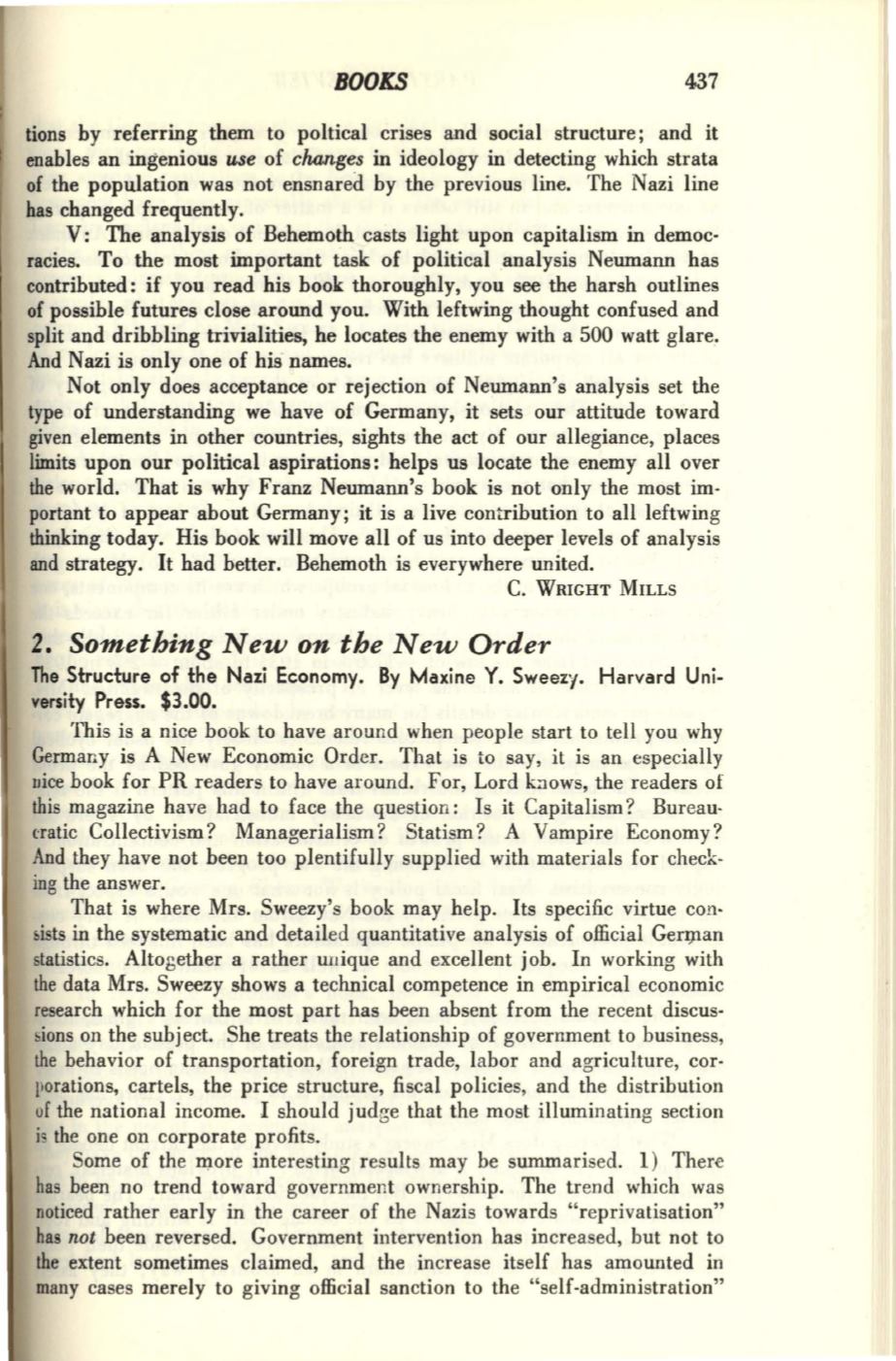
BOOKS
437
tions by referring them to poltical crises and social structure; and it
enables an ingenious
use
of
changes
in ideology in detecting which strata
of the population was not ensnared by the previous line. The Nazi line
has changed frequently.
V: The analysis of Behemoth casts light upon capitalism in democ·
racies. To the most important task of political analysis Neumann has
contributed: if you read his book thoroughly, you see the harsh outlines
of possible futures close around you. With leftwing thought confused and
split and dribbling trivialities, he locates the enemy with a 500 watt glare.
And Nazi is only one of his names.
Not only does acceptance or rejection of Neumann's analysis set the
type of understanding we have of Germany, it sets our attitude toward
given elements in other countries, sights the act of our allegiance, places
limits upon our political aspirations: helps us locate the enemy all over
the world. That is why Franz Neumann's book is not only the most im·
portant to appear about Germany; it is a live contribution to all leftwing
thinking today. His book will move all of us into deeper levels of analysis
and strategy. It had better. Behemoth is everywhere united.
c.
WRIGHT MILLS
2.
Something New on the New Order
The Structure of the Nazi Economy. By Maxine Y. Sweezy. Harvard Uni–
versity Press. $3.00.
This is a nice book to have around when people start to tell you why
Germany is A New Economic Order. That is to say, it is an especially
nice book for PR readers to have around. For, Lord knows, the readers of
this magazine have had to face the question: Is it Capitalism? Bureau–
uatic Collectivism? Managerialism? Statism? A Vampire Economy?
And they have not been too plentifully supplied with materials for check–
ing the answer.
That is where Mrs. Sweezy's book may help. Its specific virtue con–
&ists in the systematic and detailed quantitative analysis of official Gerl}lan
statistics. Altogether a rather unique and excellent job. In working with
the data Mrs. Sweezy shows a technical competence in empirical economic
research which for the most part has been absent from the recent discus·
~ions
on the subject. She treats the relationship of government to business,
the behavior of transportation, foreign trade, labor and agriculture, cor·
porations, cartels, the price structure, fiscal policies, and the distribution
of the national income. I should judge that the most illuminating section
is the one on corporate profits.
Some of the more interesting results may be summarised. l ) There
has been no trend toward government ownership. The trend which was
noticed rather early in the career of the Nazis towards "reprivatisation"
has
not
been reversed. Government intervention has increased, but not to
the extent sometimes claimed, and the increase itself has amounted in
many cases merely to giving official sanction to the "self-administration"


